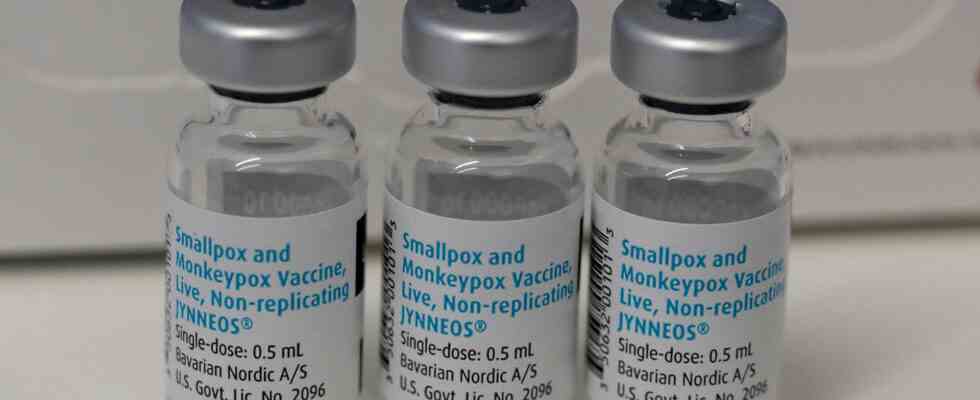Status: 08/19/2022 7:58 p.m
The monkeypox vaccine is in short supply. The EU is now recommending a different method of administration: intradermally instead of subcutaneously. As a result, far more people could benefit from an ampoule than before.
The EU medicines agency EMA has published a recommendation for a more efficient use of the monkeypox vaccine Imvanex from the manufacturer Bavarian Nordic. Accordingly, one fifth of the conventional dose is sufficient if the preparation is not injected subcutaneously – under the skin – but into the skin, i.e. intradermally. This could help to make better use of the currently very limited supply of the preparation. However, it should be a temporary solution.
As evidence of the efficiency, the authority refers to a study from 2015. About 500 people took part, who were injected with the preparation either under or into the skin. As the EMA announced, the reduced dose leads to a similar amount of antibodies against the virus as the current injection.
Subjects who received the vaccine intradermally received one-fifth (0.1 mL) of the subcutaneous dose (0.5 mL) but had similar antibody levels to those who received the higher subcutaneous dose.
It is still necessary to administer two injections at intervals of about four weeks. National authorities could authorize this procedure as a temporary measure.
The disease with monkeypox
Monkeypox is considered a less severe disease compared to smallpox, which has been eradicated since 1980. According to the RKI, the incubation period is five to 21 days. Symptoms (including fever and skin rash, for example) usually go away on their own within a few weeks, but can lead to medical complications and, in very rare cases, death in some people. Monkeypox occurs mainly in West and Central Africa and very rarely spreads to other countries, making the current trend unusual.
Higher risk of side effects on the skin
With intradermal administration, however, there is a higher risk of local reactions such as reddening, thickening or discoloration of the skin. Only healthcare professionals who have experience with this type of injection should administer the vaccine in this way. EU Health Commissioner Stella Kyriakides nevertheless described the recommendation as extremely important: “This will ensure better access to vaccination for vulnerable citizens and healthcare workers.”
Following a similar decision by the FDA supervisory authority, vaccination with reduced doses has also been possible since this month in the USA. The recommendations from the two regulators also come as a result of extremely limited global supplies of the vaccine originally developed against smallpox, which is only manufactured by Bavarian Nordic.
Stiko does not recommend vaccination for everyone
Bavarian Nordic says it expects to have 16 million cans available this year. The EMA approved the vaccine in July based on trial data. The World Health Organization estimates that it is around 85 percent effective in protecting against monkeypox.
The EU Commission approved Imvanex for monkeypox at the end of July, following an EMA recommendation. In Germany, the Standing Vaccination Commission (STIKO) recommends vaccination against monkeypox for certain risk groups and people who have had close contact with infected people. The STIKO sees an increased risk of infection above all in men who have same-sex sexual contacts with changing partners.

